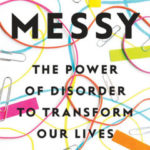While calling Blink “brilliant and accessible,” Partnoy suggests that we have overly fixated on Gladwell’s radical interpretation of “thin slicing” – the idea that you can discern a profound truth about something from your first two seconds of exposure to it:
So how thin should a thin slice be? The answer is rarely two seconds. If we are judging whether someone is dangerous, our brains and bodies are wired to react very quickly, within milliseconds. We assess race, gender, and age in a fraction of a second. We aren’t as good at guessing sexual orientation, but, to the extent we see it, we see it right away: When students are shown a photo of a man and asked if he is gay, they are about as accurate within one hundred milliseconds as they are after longer periods. For these reactions, we don’t need anything close to two seconds.
But for other questions, two seconds isn’t nearly long enough. If we are asked to tell whether someone is friendly or dangerous, we do better with more time. To accurately assess whether someone is sociable, we need at least a minute, preferably five. The same is true if we are judging complex aspects of personality, such as neuroticism or open-mindedness. For these decisions, our impressions during the first two seconds fail us. We need more time.
For many judgments, thin slicing has a kind of learning curve, steep at first as we quickly gather information about what we are watching and then flatter as we process that information. Although some people describe thin slicing as a snap judgment, it is really more of an acceleration than a snap, more like a car climbing a hill than a light bulb going on. Sometimes we do reasonably well within a few seconds, but we often do better with a minute or longer. It depends on the difficulty of the assessment – the steepness of the hill. Usually thin slicing isn’t as easy as flipping a switch.
For more information: frankpartnoy.com/wait



